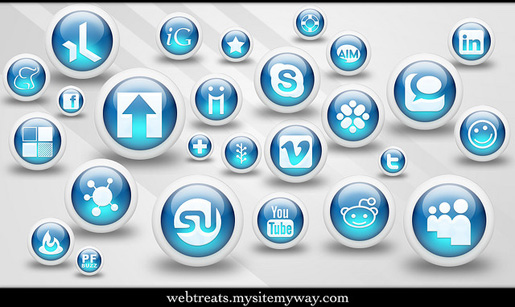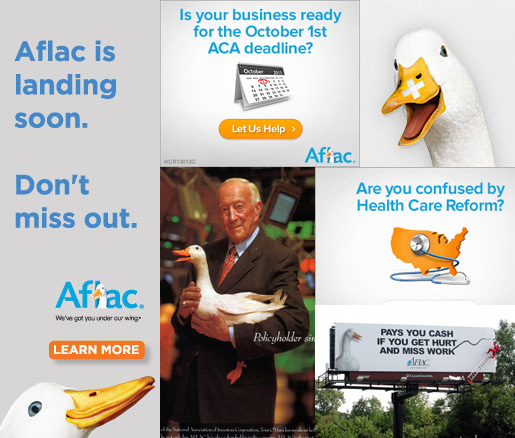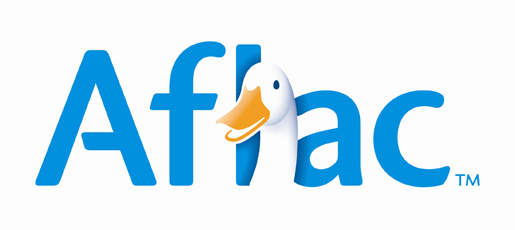Oh great. Another word to learn in the wide world that is the web, not to mention another marketing term. Like most freelance designers, you probably just want to focus on designing! Yet creating a unified transmedia story is something vital enough to be worth spending at least the length of time it takes to read this post.
So what’s “transmedia”, anyway? Simply put, it’s a message that spans across several mediums – like your website (desktop and mobile) to social media, to print, and anywhere else your freelancing business appears. The Aflac duck is a perfect example to review before looking at the details of how you make transmedia storytelling work for you as a freelance graphic or web designer:
Case Study: The Injured Aflac Duck
Aflac has spent hundreds of millions of dollars creating a character we’ve all come to know, simply called the Duck. During the BCS National Title game in January 2013 – the most watched American Football college game in history – Aflac unveiled a twist in their story: the Duck had been injured.
They created a transmedia approach to this new story line: you could go to GetWellDuck.com and send the Duck your get-well wishes. You could go to Facebook and check in on the Duck. And doctors rolled out reports on television with updates as to his health.
Aflac’s brand story is that of an insurance provider. When the beloved Duck becomes injured, all throughout the story, no matter the medium, you see the value statement for Aflac – thank goodness the Duck had Aflac so he can keep his bills paid!
Aflac does an excellent job of not only creating a transmedia story that translates well, they also shifted all media efforts to this story in one fell swoop. This helps to remove distracting stories from the message or inconsisent (less effective) older stories. Their brand’s value is clear throughout and they actually tell a story of a Duck you hope will get well soon along the way.
It can be a serious challenge getting your freelance design story across to your target audience, especially in today’s world of mixed media. But this concept of transmedia sets out to unmix the media and create a unified front for your message. Here are some tips for creating a clear, focused “story” like Aflac through which your target audience will hopefully engage and ultimately choose you over the thousands of other designers found on the web:
Know Your Own Story
First and foremost, you must know the “story” you are trying to tell about yourself or your business. Basically, your story involves what makes you unique and different from your competitors and what primary value or problem you solve for your clients. You don’t have to come up with an elaborate story like the Aflac duck. You simply have to come up with the message surrounding yourself as a designer.
Keep in mind, though, that the more engaged you can get your audience to be, the more likely they will be to use your services.
You may want to start by looking at your specialty. What is your niche area of expertise? Is it logo design, web design, etc? Then you can look at what you do differently from any other designer who shares your niche specialty. What do you bring to the table that others don’t? Is it unique illustrations? Custom fonts? Or maybe you simply have a knack for helping clients figure out their own story through graphics.
In all of this, too, make sure that your clients can easily understand exactly what problem you solve for them.
You also need to decide whether you will market yourself as, well, yourself or as a design business. Some designers choose to create a freelance business with their name, and market it as such, to seem more personal and approachable.
Others choose to create a more formal-like business name to seem more robust and legitimate. No matter which route you take, this must be your brand from here on out that you stick with in all of your marketing endeavors.
Define Your Target Audience
Before you can jump into a transmedia story for your brand, you have to define your target audience. This will help you more effectively tailor the story and the media selection to them.
You don’t have to have a single target audience. You can define multiple targets and tailor the story accordingly.
Just understand that the nature of the beast is that people are not so easily classified by a single customer type – so you will likely have customers from one definition intermingling with another. Make sure your story is consistent even if nuances change.
One way to help define your target audience is to create a list. Keep your own story in mind – the one we worked on above – and then create a quick list of everyone that comes to mind who may have the sort of problem you can solve.
Start broad, such as, “startups without a logo” and “old businesses needing a brand revamp”. Then get more detailed and out of the box. Can you help individuals too? Are there specific industries or even a specific region you can help the most? You may only be able to define your audience broadly right now, and that’s okay. As you gain more and more clients, you will be able to come back to this step and refocus if needed.
Know How to Engage Your Audience
With your target audience defined (at least broadly), you can now determine how they might best discover and engage with your story. For instance, let’s say that someone comes across your design services through a LinkedIn post you created in a group. Another niche group in your target audience might respond best to Tweets or to an email. It may take some experimenting to find out what seems to work the best for you and your audience.
You may also want to consider the fact that many prospective clients will look for reviews of your work before contacting you for a quote. Be sure to encourage current clients to leave reviews either for your website or on a site such as Yelp or on your Facebook or Google+ page. Register with the Better Business Bureau, if you are located in the US or Canada. And if you have negative reviews, respond politely, and contact the reviewer privately to find out if you can make it right. Although, a few negative reviews are actually healthy for even freelance designers, especially if you have plenty of positive reviews as well.
It just shows an audience that you are authentic and human.
Define the Story Across the Various Forms of Media

Photo Credit: webtreats via Compfight cc
Once a potential design client has engaged – which can entail clicking a link in an article, searching for you on Google, or clicking an ad to name a few – your story must continue regardless of the medium. Sometimes you cannot control the medium. Your ad may show up in an email on their phones or their desktops.
Your text-based ad may display on Facebook for their mobile device or while they’re home surfing on their computers. Or they may see your Tweets or posts on Google+ before they ever visit your website. So your story must be consistent no matter what kind of media is involved.
From print to mobile to email – your story has to be clear with the value to the customer ever present. And this value is what problem you are solving for them, in your unique way. While you may word something a bit differently, or your style of posts may be a little different from one social media to the next, make sure that you always have this same basic story.
Yes, the places you interact with prospective clients will definitely mean a slightly different audience, which in turn means a slightly different approach. But they have to be able to recognize you quickly and easily no matter if they stumble upon you in Twitter one day and then a Google search the next day.

Done right, as the Aflac example shows, transmedia storytelling can be a powerful way to boost engagement with your networks or even the public and to create a strong connection. If your freelance brand needs something more to get noticed, try a transmedia campaign.
Or simply take a look at the consistency of your message across every medium your audience may encounter you. Be sure your story works well for all media and gets your audience actively engaged, and you may very well surpass that plateau you’ve hit.
 Tara Hornor
Tara HornorTara Hornor has a degree in English and has found her niche writing about marketing, advertising, branding, graphic design, and desktop publishing. She is a Senior Editor for Creative Content Experts, a company that specializes in guest blogging and building backlinks. In addition to her writing career, Tara also enjoys spending time with her husband and two children.







